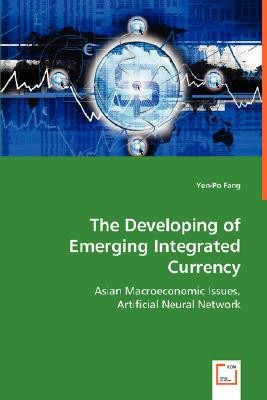
- We will send in 10–14 business days.
- Author: Yen-Po Fang
- Publisher: VDM Verlag Dr. Mueller E.K.
- Year: 2008
- Pages: 84
- ISBN-10: 3639001729
- ISBN-13: 9783639001723
- Format: 15.2 x 22.9 x 0.4 cm, minkšti viršeliai
- Language: English
- SAVE -10% with code: EXTRA
Reviews
Description
This research discusses constitution process and forecasting issue for Asian currency units (ACU) in terms of ten Asian countries including Japan, Indo-nesia, Malaysia, Hong Kong, South Korea, Singapore, Thailand, Philippine, Taiwan and China. The first, this article provides the analysis of forecasting performance for ACU by employing variant of methods, e.g. BPN, RNN, TDRNN and GARCH. The results showed that ANNs has better performance than GARCH and BPN model presents prominent forecasting performance in most of division conditions. The second part is to identify the modified components for central value of Asian currency units (ACU) via BPN model and compare the results with radial basis function neural network (RBFNN). We constitute eight models to evaluate the impacts of macroeconomic variables on central value of ACU. The empirical evidence supports that our sample countries need to take foreign direct investment, external debt and bank's claim on private sector into account for expressing the central value of ACU more effectively. To verify contagion causes for Asia flu, the experi-mental model is adaptive network-based fuzzy inference system (ANFIS). The empirical result was indicated that the contagion effect would most likely be influenced by tight financial linkage and similarly macroeconomic condition.
EXTRA 10 % discount with code: EXTRA
The promotion ends in 22d.08:01:06
The discount code is valid when purchasing from 10 €. Discounts do not stack.
- Author: Yen-Po Fang
- Publisher: VDM Verlag Dr. Mueller E.K.
- Year: 2008
- Pages: 84
- ISBN-10: 3639001729
- ISBN-13: 9783639001723
- Format: 15.2 x 22.9 x 0.4 cm, minkšti viršeliai
- Language: English English
This research discusses constitution process and forecasting issue for Asian currency units (ACU) in terms of ten Asian countries including Japan, Indo-nesia, Malaysia, Hong Kong, South Korea, Singapore, Thailand, Philippine, Taiwan and China. The first, this article provides the analysis of forecasting performance for ACU by employing variant of methods, e.g. BPN, RNN, TDRNN and GARCH. The results showed that ANNs has better performance than GARCH and BPN model presents prominent forecasting performance in most of division conditions. The second part is to identify the modified components for central value of Asian currency units (ACU) via BPN model and compare the results with radial basis function neural network (RBFNN). We constitute eight models to evaluate the impacts of macroeconomic variables on central value of ACU. The empirical evidence supports that our sample countries need to take foreign direct investment, external debt and bank's claim on private sector into account for expressing the central value of ACU more effectively. To verify contagion causes for Asia flu, the experi-mental model is adaptive network-based fuzzy inference system (ANFIS). The empirical result was indicated that the contagion effect would most likely be influenced by tight financial linkage and similarly macroeconomic condition.


Reviews